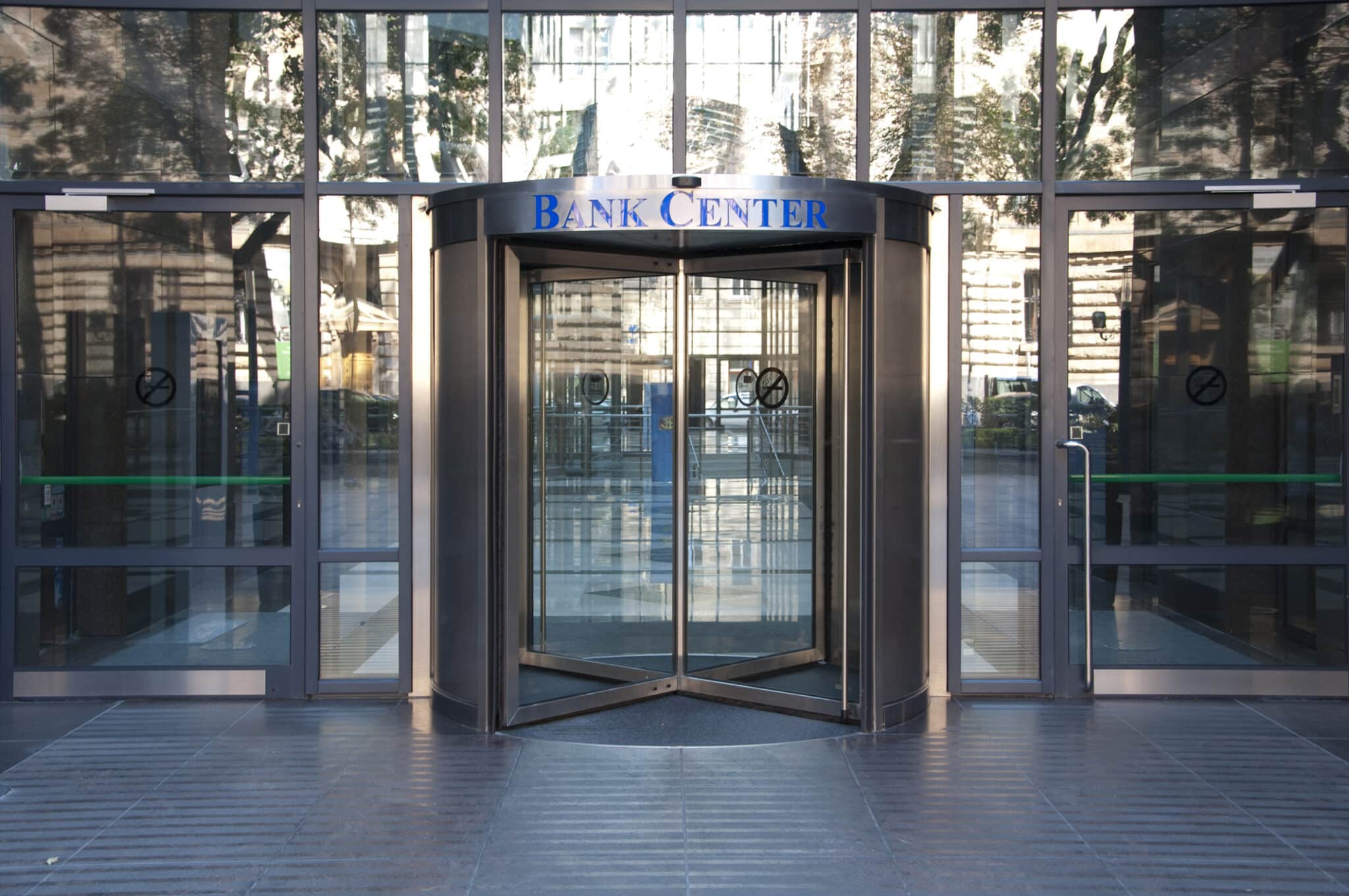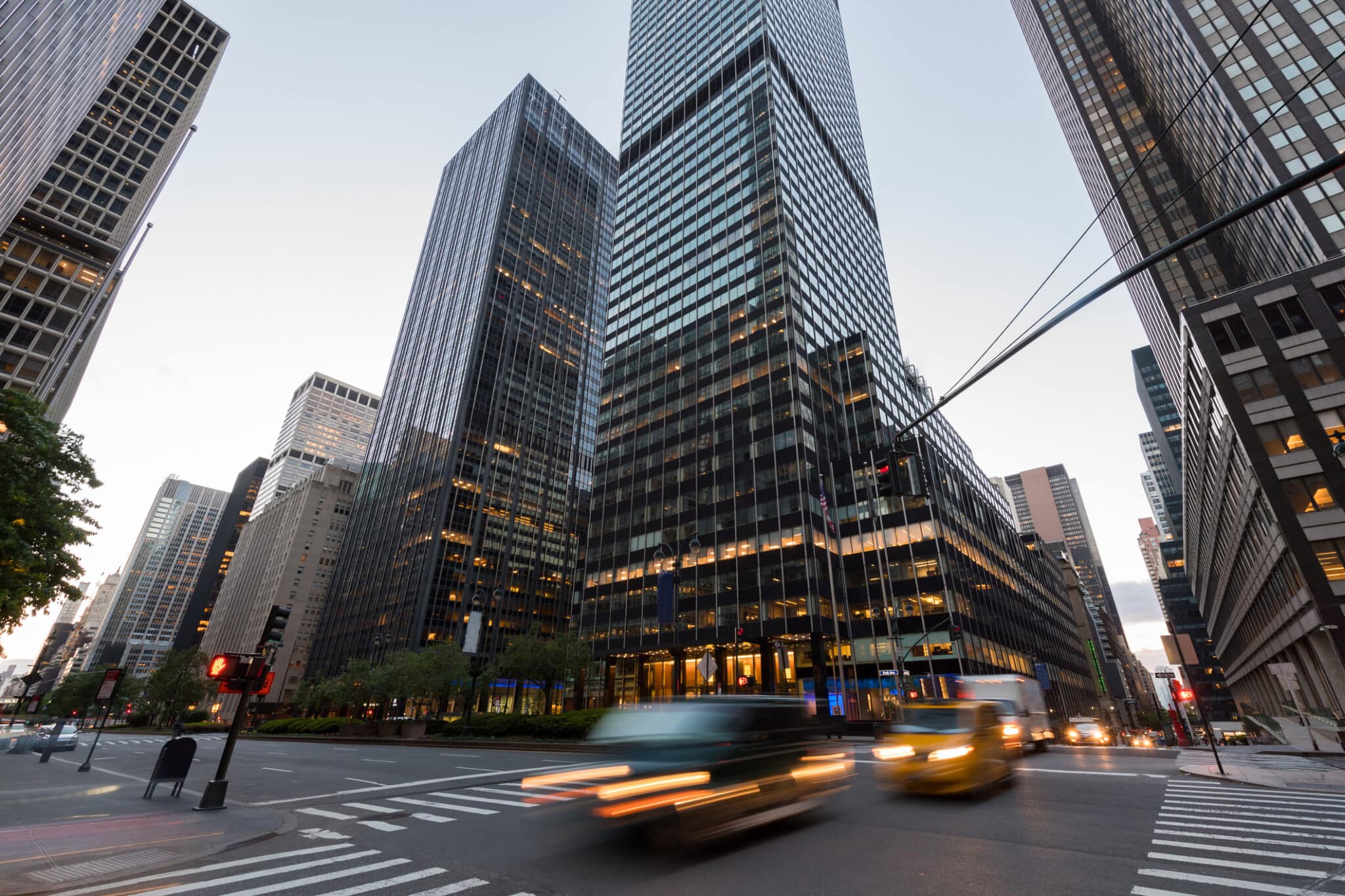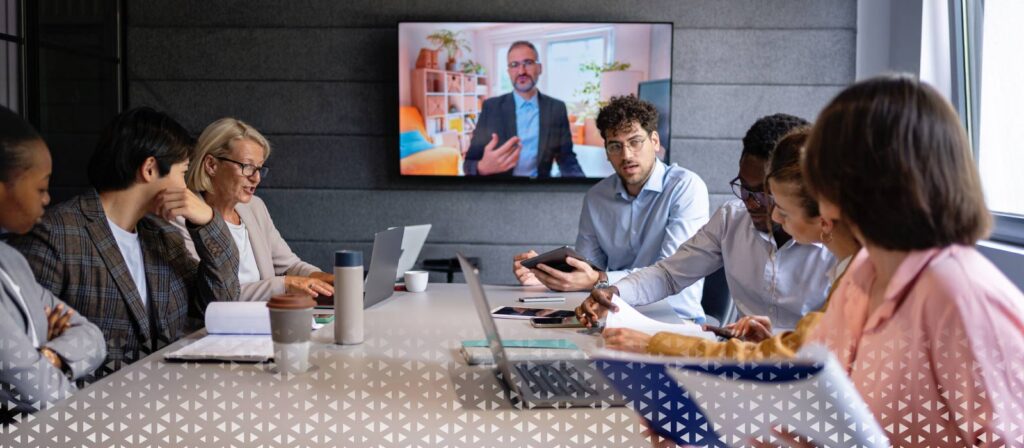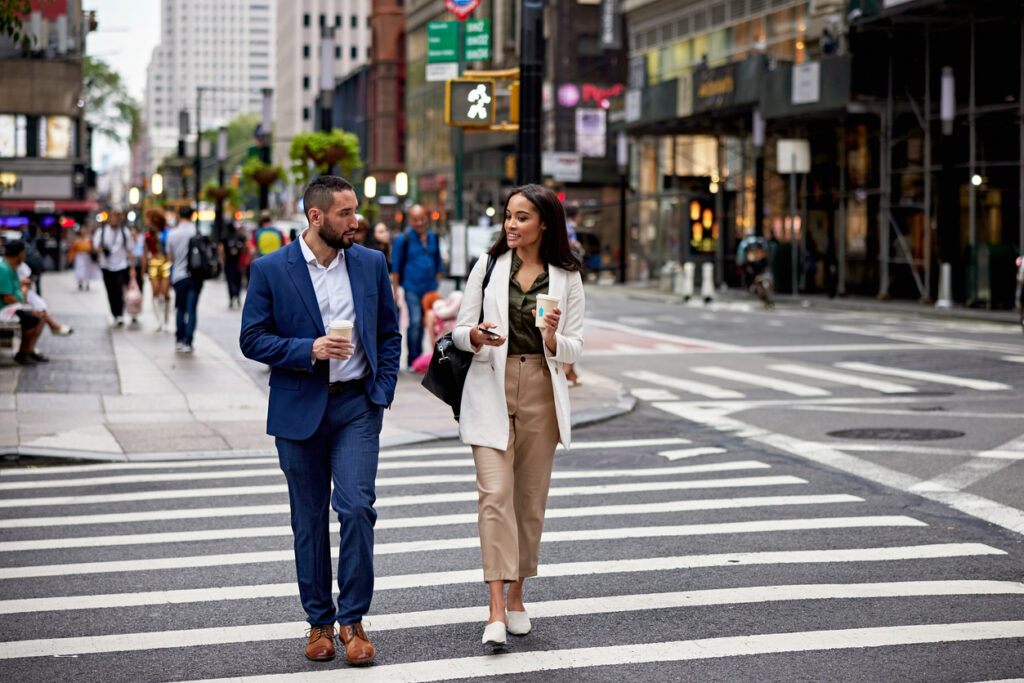JPMorgan Chase designed a workplace for the future. Here’s what that looks like post-RTO

Editor’s note: This article was originally published in 2024 and updated on April 4, 2025.
In 2019, JPMorgan Chase & Co. was planning to construct a new New York City headquarters in Manhattan. Then the pandemic hit. During lockdowns, when their HQ stood empty on Madison Avenue, the banking titan’s thinking on the essence of the office itself began to transform. “We certainly learned from the [pandemic] years,” says a JPMorgan spokesperson.
During COVID quarantine measures, it became clear that most, if not all, knowledge-based work around the world could be done at home, in a cafe, or even a mountainside Sprinter van. And while in 2023, empty office buildings across the country were being converted into breweries, vertical farms, and wellness centers bedecked with swimming pools, JPMorgan bet that the office would remain a sacred space for American work. To back up this real estate investment strategy, the bank constructed a massive 60-story tower on Midtown Manhattan’s Park Avenue.
JPMorgan’s return-to-office mandate
In January 2025, JP Morgan Chase announced a strict five-day-a-week return to office (RTO) mandate for over 300,000 employees across all divisions and global locations. The swift and inflexible policy echoes federal back-to-office mandates, and aligns with similar rollouts by financial institutions like Citadel. JPMorgan CEO Jamie Dimon has long argued that working from home “doesn’t work for spontaneous idea generation, it doesn’t work for culture…[What does is] bumping into each other over the day and advancing an idea you just had.” JPMorgan Chase was one of the businesses on the front lines of pushing back against remote work, especially Dimon, who warned his workers not to get too cozy with working from home.
At the time, the CEO expressed empathy for his employees who got used to avoiding grueling commutes. “I totally [got] it.” Yet, Dimon’s most recent (and inflammatory) comments around full-time in-office work were all but empathetic. During a now-infamous town hall meeting in which an employee questioned whether the mandates were essential, Dimon responded with a “rant,” complete with expletives, doubling-down on his stance that remote options lead to decreased productivity and inefficiency.
Unlike JPMorgan, many financial institutions still embrace hybrid work, and even see it as a strategic advantage that allows them to retain and attract top performers in the industry. In fact, Flex Index reported that 91% of financial services companies in the U.S. offer work location flexibility, which is good news for any former JPMorgan employees.
How JPMorgan Chase employees responded to the RTO mandate
Employees did not take the enforcement of these policies sitting down. Nearly 2,000 JPMC employees to date have signed a petition urging leadership to reverse the mandate and reinstate a hybrid work model, emphasizing its outsized impact on women, caregivers, and employees with disabilities. Many employees took to internal channels to voice their criticisms and concerns around the mandates.
How has JPMorgan’s RTO mandate impacted the physical workspace?
Previously, around 40% of JPMorgan employees were hybrid. When all employees were required to return to the office in March, they encountered a shortage of desks and meeting room spaces, making it difficult to sit and collaborate with colleagues—if they could find a space at all. Staff resorted to measures like “claiming” desks with paper tents, and taking video calls out in the open, which meant noisy, distracting workspaces. Many complained about poor WiFi, as well as their colleagues sneezing and coughing throughout the day.
The question remains: Will JPMorgan’s “office of the future” offset the pushback against mandates and truly support employee wellbeing?
Design elements of the JPMorgan future headquarters
The design of the JPMorgan Chase headquarters focuses not on desks and conference rooms, but air. During the pandemic, air circulation was on the minds of nearly everyone, including Lord Norman Foster, the chief architect of the structure he calls a “breathing building.” JPMorgan’s office headquarters will include twice the amount of fresh air required by Manhattan’s building code. It will be equipped with a state-of-the-art air filtration system for its more than 14,000 workers, some of whom will work at trading-floor desks outfitted with personal climate systems.
Along with air, light is a core element of JPMC’s “office of the future.” The building will be wrapped in triple-pane glass and equipped with automatic solar shades, attributes designed to optimize natural light. In addition, outdoor space at the headquarters will double from the previous HQ. Air, light, and (more on this topic soon) gardens: a natural-world triumvirate that are in keeping with the post-pandemic value of doing business in “places that are healthier,” says the bank’s head of real estate. Research suggests, of course, that sunlight and green spaces are key factors in mental health.

The Vanguard of office space real estate
JPMorgan Chase’s headquarters promises to be at the forefront of trends in co-working spaces. The pandemic shattered the standard American office culture and “supercharged innovation in the workplace,” according to the workplace design firm Zaha Hadid Analytics + Insights.
Connecting healthy spaces to productivity
There’s a growing trend in workplaces that feature garden atriums, the elevation of the natural world through plant life, natural light, and rooftop gardens. Other trends in co-working spaces include libraries with egg-shaped pods and quiet please signage, “air porches” and high-top dining islands, nomad tables, and lounge areas with booths made of natural materials. To tie these locations together, “touchdown spots” are increasingly popular new technologies that let employees punch in from just about anywhere in the building.
Block-sized building with a tiny footprint
Sustainability is one of the biggest trends in new office spaces. Many of these aforementioned features of JPMorgan’s headquarters will work toward the building’s lofty eco-friendly goals. The office aims to be a net-zero-emissions edifice. It hopes to achieve this in part by:
- Recycling or up-cycling over 90 percent of the materials from its 2021 demolished headquarters at the Union Carbide Building
- Using water-storage systems and sourcing its power from an upstate New York hydroelectric plant
- Utilizing smart-building technology to optimize light, shade systems, and energy use, all key factors in reducing waste in the flexible-work model
Teamwork
Another trend in business design elements centers around collaboration. One function of open, verdant, technology-savvy office buildings is that they encourage a culture of teamwork that’s hard to achieve with fully remote work.

Hybrid horizons
The future office model for workers in knowledge-based industries seems to be the hybrid work week—one that JPMorgan once embraced, but has now abandoned. Forbes reports that nearly 80% of businesses are transitioning to hybrid work models. These companies include titans of varied industries, such as Ford, Microsoft, and OfficeSpace client the New York Times, the latter of which emphasized that the hybrid workspace is a collaborative environment that drives success. Even Zoom’s employees returned to work in a hybrid capacity.
“The only thing [previously] holding back flexible work arrangements was a failure of imagination,” said the director of the Center for WorkLife Law at UC Hastings. “That failure was remedied in three weeks in March 2020.”
Generations in the office space
Outside of more dexterous imaginations, another cause of businesses embracing hybrid employment is that employees the world over want to return to the office. This seems especially true of younger workers. In interviews including the Times’ “What Young Workers Miss Without the ‘Power of Proximity,’ ” Gen Zers and younger Millennials pointed to these benefits of in-person work:
- More consistent manager feedback for younger workers hoping to advance their careers (The designer of Google’s Mountain View campus, Clive Wilkinson, argues that the office will never “be dead” because it’s “the fermenting ground for people growing into successful adults.”)
- Interaction between different tiers of coworkers—something that economists from Harvard and elsewhere found was a key part of workers, especially women, getting career-advancing advice
- In-person chats and face-to-face meetings (Just under around 85 percent of Gen Zers prefer face-to-face communication over phone calls, emails, or texts, according to The Washington Post.)
- Bump-ins, espresso breaks, and other enriching interactions with real people in real spaces
At home in the office
At the core of the office of the future, one element of pandemic-era remote working promises to endure: comfort. IBM’s chief human resources officer spoke of how the company is embracing the ways working remotely during quarantine meant being invited into people’s homes. This quarantine hallmark had everyone feeling “a little more human,” more “dimensional,” as the Harvard Business Review put it. This holdover is inspiring office libraries with nooks for deep-focus work, cozier furniture, and dimmable lighting. In the future of offices, it seems that certain designers and leaders will have taken the embers of the best work-from-home feelings and built them into a fire. (And, yes, fireplaces are already becoming a fixture in trendy office spaces.)
The future of office amenities
In addition to being more like home, the office of the future will likely feature VIP luxuries that most can’t get at home. Right now, the office spaces that are in higher demand are Class A properties—buildings that have, say, cycling alcoves, yoga studios, medical offices, natural spaces, and high walkability. Class-A offices like JPMorgan’s have lower vacancy rates than their Class-B and C counterparts. JPMorgan’s emphasis on upscale facilities reflects these larger trends in office real estate.
Support flexible work arrangements with Hybrid Work solutions. Give employees the tools they need to thrive.
The new Park Avenue HQ: in vogue and competition
In the shadow of the Great Resignation, it must be noted that employee-centered trends in the office of the future are partly the result of employees demanding better working spaces. In many American cities, it seems that if businesses want to keep Class A talent, they’ll have to provide Class A properties. If not, workers might simply leave. As one survey conducted by an HR consultancy agency found, nearly 75% of employees between the ages of 18 and 26 are looking for a new employer or are planning to search for one in the next six months.
Having a toweringly desirable office like JPMorgan’s Park Avenue headquarters promises to be a boon to both the bank’s retention of employees and their employees’ production, as well. “The reality is, if you are happier at the workplace if you have a variety of activities that you can extend into the leisure element of the day, then you’re going to be more productive,” said the architect of the bank’s new headquarters.
JPMorgan lists these benefits of prime office spaces:
- Competing for the best people
- Enticing employees back to the office
- Achieving wellness targets
- Increasing productivity
Now, only time will tell if they can deliver on these promises.
Building on the tradition of cutting-edge offices
This office-as-oasis concept isn’t new. Long before the pandemic, Microsoft, Apple, and Google all had “campuses” where employee well-being was celebrated, free dining options were standard, organic vegetables were gardened, ping-pong tables and collaborative spaces were the norm, on-site hiking trails were groomed, the swimming pools were warm, and upscale shuttles ferried employees to work.
These west-coast tech offices were revenue-generating zones that employers maybe (probably) hoped their employees would come to confuse as home itself. Blurring the lines between one’s domestic space, one’s neighborhood and one’s work might soak up every drop of human productivity, but it can be a pernicious thing, according to the designer of Google’s Mountain View, CA, campus. Employee burnout can result. Family relationships are more apt to wilt. Neighborhood economies might suffer.
The next-generation office
Perhaps the difference between those ecosystems of the past and the offices of the future is simple: There’s a sense, and a promise, that employees won’t be permanently swapping their domestic space for office space. They will be at home for longer periods than most anyone could have imagined before COVID-19 quarantines. The present zeitgeist for in-office work seems to be: when we do gather, we will do so with intentionality, in moments of collaboration or substantive culture-building, not just to “clock in,” not just to make small talk and inside jokes around a coffee urn (features of office culture that, it turns out, not everyone liked).
The specter of company culture’s “old boys club”
In the post-fully-remote-work world, there’s a clear sense that successful businesses will keep in mind other pre-pandemic norms that negatively impact certain groups of workers.
In a New York Times survey, some 700 people, including temporary remote workers, gave insight on returning to the office. They noted quirks of office culture and office design they were happy to leave behind. These included:
- Trying to navigate taking care of their kids alongside professional expectations that were “unspoken”
- Small-talk about fantasy football, Fortnite, and office poker
- Frigid offices designed for the metabolic rate of a 154-pound, 40-year-old man
Return-to-office concerns often centered around racial and gender lines, as well, according to a study of more than ten thousand office workers conducted by a Slack-funded research group. The research found:
- In the U.S., 75 percent of white workers in knowledge-based positions wanted to continue working remotely, compared with between 81 percent of their Black counterparts and 86 percent of their Hispanic counterparts
- Globally, half of working mothers wanted to continue working remotely full-time, or most of the time, compared to just 43 percent of working fathers
As one surveyed info-tech worker put it, “There’s not much point in returning to the office if we’re just going back to the old boys’ club.”

Remote work across generational divides
Research suggests age plays a factor, too, when it comes to who still prefers remote working. It has surprised some observers that it has typically been the older members of the workforce who have pushed back against returning to the office. This is partly because these workers—Millennials, Gen Xers, and Baby Boomers—are more likely to have kids and, thus, more out-of-office pressures. These workers want “more choice, more personalization, and more mobility,” according to architect Arjun Kaicker.
The new mandate
Many company cultures now emphasize diversity, equity, and inclusion as part of a healthy office culture and a prosperous workplace of the future. Along with valuing employee mental health, diversity has become central to the argot of HR departments of the future office. (Of course, it remains to be seen how much fidelity to these tenets businesses will ultimately keep.)
The future of work alongside AI
It’s becoming evident that thriving in the workplace will likely require the flexible use of artificial intelligence. Generative AI can now write code, resurrect the voice of long-passed literary stars, and read electrocardiograms to diagnose a heart attack. The New York Times piece, “The A.I. Revolution Will Change Work. Nobody Agrees How,” estimates that around three hundred million full-time positions could be affected by automation and that 80 percent of workers will have a tenth of their tasks transformed by AI.
In the banking world, JPMorgan’s Artificial Intelligence Research program is “explor[ing] and advanc[ing] cutting-edge research in the fields of AI and Machine Learning, as well as related fields like Cryptography.” Some goals on JPMorgan’s research agenda include developing and researching AI that can predict and impact economies, AI that fights financial crimes, AI that facilitates the client experience, and AI that empowers their workers’ “productivity, timeliness…experience, and operational efficiencies.”
JPMorgan bets on a new kind of workforce
No matter how artificial intelligence manifests shortly, it is humans who will control corporate culture, work environments, and the world of business. JPMorgan is investing in its human workers, including the ones they’ll hire in the future. Over the next handful of years, the bank plans to spend $350 million on training people for work of the future.
The investment banking firm emphasizes skills over education. Where once JPMorgan required college degrees for many of its financial services positions—including bank tellers—75% of job openings the bank posted in the U.S. in 2018 didn’t require a college degree. Instead of degrees being the de facto qualification for JPMorgan positions, the bank and other financial institutions hope to better “[identify] the skills we need and [to understand] the skills and education our employees have,” according to the bank’s head of human resources. To accomplish this, JPMorgan has paired up with community colleges and social-equity foundations to provide more practical job training.
How to optimize a hybrid working model
Businesses that have embraced hybrid work have learned that optimizing the spaces throughout the office—when many workers might not be present—is key to reducing waste.
This is true no matter what class of property workers are returning to, be it JPMorgan’s glass-wrapped Manhattan showpiece or a repurposed industrial warehouse in a middle-American city. Hybrid businesses can get a head start on optimizing space by passively measuring attendance with presence data, identifying patterns like which meeting room types get the most use, and using desk booking software so employees know they have a space to work when they come in.
Achieving spatial efficiency
Tools are evolving to help businesses manage office spaces in the hybrid landscape. IoT sensors detect daylight, temperature, and noise. This data allows office designers and business leaders to understand where people like to work, which desk they like to use, what hour a conference room is most popular, which day of the week a wing is vacant, or what hour that wing is jam-packed.
With room- and desk-occupancy data, employees and facility managers can use office booking software, desk hoteling, hot desking, and free-address seating to find the optimal space for those key moments of collaboration or creative solitude. Some firms are even using AI to create floor designs that ergonomically orchestrate desks, AC units, elevators, staircases, espresso bars, dining tables, lighting, furniture, and every other Class A amenity these offices of the future offer.
JPMorgan’s amorphous HQ
To avoid wasted spaces, JPMorgan’s office will have the ability to shape-shift. Its furniture, desks, chairs—even its walls—all have been designed to be moved easily and efficiently. An entire floor can be redesigned over a weekend. The once-flexible nature of the bank’s hybrid-work model is reflected in the actual brick-and-mortar of JPMorgan’s headquarters itself. This ability to change is the crux of the office of the future, according to the bank’s global director of real estate, who mused, “How can you future-proof a space? You make it flexible.”
Book a demo with our team and learn how you can design workplaces for people, not policies.




